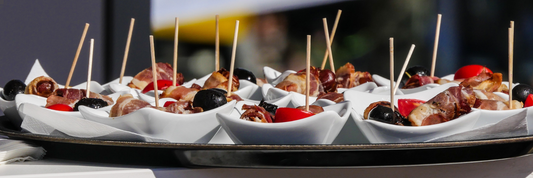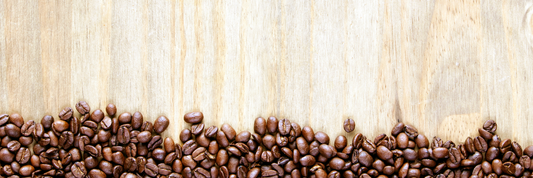Choosing the right food packaging for frozen food is crucial to maintaining product quality, extending shelf life, and ensuring food safety. Whether you’re a food manufacturer, restaurant owner, or retailer, selecting proper packaging helps prevent freezer burn, preserve freshness, and enhance customer satisfaction. In this article, we’ll explore the best materials, packaging types, and key factors to consider when selecting food packaging for frozen food to keep your products in top condition.
What Food Packaging Contains PFAS?
Importance of Frozen Food Packaging
Frozen food is any type of food that has been preserved by freezing. This process involves quickly lowering the temperature of the food to below freezing, typically around -18°C (0°F). This stops the activity of bacteria and other microorganisms that can cause food to spoil. So, when it is packaged, the packaging needs to satisfy both the requirements of freezing and protecting the food inside.
Not all types of packaging can be used with frozen food. It’s important to select the right type that is safe to use in the freezer, has the ability to withstand low temperatures.

Types of Frozen Food Packaging
Flexible Plastic Pouches
Plastic pouches are a popular choice in flexible packaging, commonly used for storing leftovers, raw ingredients, processed foods, and frozen products. Like plastic films, they can be made from materials such as low-density polyethylene, polypropylene, nylon, and polyethylene.
When used for frozen food storage, plastic pouches help preserve freshness by creating a protective barrier against moisture, dust, and UV light. This ensures the food remains safe and maintains its quality for an extended period.
Which Food Business Will Need Flexible Packaging?

Rigid Packaging
Rigid packaging is commonly used for bulk frozen foods, ready-to-eat meals, and premium products. Examples include:
-
Plastic containers (polypropylene or polyethylene-based)
-
Aluminum trays (for oven-ready meals)
-
Cardboard boxes (for frozen pizzas, snacks, and desserts)

Advantages:
-
Provides better protection against crushing or damage
-
Offers stronger insulation for heat-sensitive frozen foods
-
Allows for branding and labeling on a larger surface
Shrink Wrap & Vacuum Sealing
Shrink wrapping and vacuum-sealing methods are used to create airtight protection for frozen food items such as meats, seafood, and vegetables.
Advantages:
-
Eliminates oxygen exposure, reducing freezer burn risk
-
Helps preserve food texture, flavor, and freshness
-
Extends product shelf life

Expanded Polystyrene (EPS) Foam
Expanded Polystyrene (EPS) foam, made from solid polystyrene beads, is a widely used packaging material known for its strength, versatility, and excellent insulation properties. Its low thermal conductivity comes from its closed-cell structure, which is composed of 98% air, making it highly effective at maintaining frozen food temperatures.
EPS foam is also highly water-resistant, absorbing minimal moisture even when submerged, which helps protect frozen foods from contamination. Additionally, EPS containers can be customized to fit different product sizes, with varying thickness and density levels that enhance insulation. This ensures frozen food stays well-preserved throughout storage and transportation.
Best Packaging Materials for Frozen Foods
When it comes to materials that can be used to make packaging for frozen food, there are several types. Each of them has its own temperature resistance with advantages and disadvantages. Following is a table that shows the difference between them:
|
Material |
Properties |
Temperature Resistance |
Advantages |
Disadvantages |
|
Polyethylene (PE) film |
Flexible, transparent, moisture barrier, low cost, recyclable options available |
Up to -40°C (-40°F) |
Affordable, easy to use, lightweight |
Not puncture-resistant, prone to tearing |
|
LDPE (Low-density polyethylene) |
Flexible, good for impact resistance |
Up to -40°C (-40°F) |
Flexible, good for shock absorption |
Not as strong as other PE derivatives, limited barrier properties |
|
HDPE (High-density polyethylene) |
Rigid, strong, good barrier properties |
Up to -60°C (-76°F) |
Strong, durable, excellent barrier |
Can be expensive, not as flexible as other PE derivatives |
|
EVA (Ethylene vinyl acetate) |
Flexible, good for sealing, some microwave-safe options |
Up to -30°C (-22°F) |
Flexible, good sealing properties, microwaveable options |
Not as strong as other PE derivatives, limited temperature resistance |
|
PET (Polyethylene terephthalate) |
Rigid, clear, good barrier properties, shatterproof, recyclable |
Up to -40°C (-40°F) |
Clear, good barrier, recyclable |
Can be expensive, not microwave-safe |
|
Cardboard and Laminated Paper |
Sustainable, recyclable, printable, customizable, good for branding |
Up to -18°C (0°F) |
Eco-friendly, customizable, affordable |
Not as strong as plastic, susceptible to moisture, limited temperature resistance |
- The type of delivery packaging items appropriate for each type of business
- How food packaging affects the environment
Factors to Consider When Choosing Food Packaging for Frozen Food
When choosing packaging, several factors must be considered, including material compatibility, barrier properties, consumer convenience, environmental impact, and cost-effectiveness.
Packaging Material Compatibility
The packaging material must be suitable for the specific frozen food product it will contain, store, and distribute.
Key questions to consider:
-
What temperature does the food need to be stored at?
-
Is the food acidic, fatty, or highly perishable?
For example, delicate seafood that requires deep freezing should be packaged in materials that can withstand extremely low temperatures without becoming brittle or cracking. Plastic films are commonly used due to their durability and flexibility in cold environments.
Barrier Properties
A crucial function of food packaging for frozen food is to protect it from environmental factors such as moisture, air, light, and contaminants.
Some materials, like plastic films and EPS foam, offer excellent barrier properties, preventing freezer burn and maintaining food freshness. Packaging that forms an airtight seal can significantly enhance food preservation by keeping out external pollutants.
Consumer Convenience
Customers prefer packaging that is easy to open, close, store, and reseal.
-
Plastic pouches and cardboard boxes offer great convenience as they are lightweight, resealable, and easy to handle.
-
EPS foam containers, while insulating, often lack resealability, making them less appealing to consumers.
Understanding your target market’s preferences can help you select the most user-friendly packaging option.
Environmental Impact
Sustainability is a growing concern in the packaging industry. Some frozen food packaging materials contribute to environmental pollution, making it crucial to explore eco-friendly alternatives.
Recyclable plastic pouches and biodegradable materials are becoming popular choices. When selecting packaging, consider options made from recycled materials to minimize environmental impact while maintaining functionality.
Cost-Effectiveness
Balancing cost and quality is essential to optimizing your packaging strategy.
For instance, packaging a small portion of frozen fish in an oversized container is inefficient and costly. Instead, using an appropriately sized plastic pouch or a plastic container with an aluminum foil cover can help reduce expenses while maintaining food quality. Choosing the right packaging ensures cost savings without compromising product integrity.
Steps to Custom Frozen Food Packaging for Small Businesses
Here’s a step-by-step guide:
Step 1 - Define Your Packaging Requirements
Before selecting a packaging solution, consider the unique needs of your frozen food product. Your packaging should be:
-
Easy to fill, store, and transport
-
Durable and resistant to freezing temperatures (to prevent brittleness and cracking)
-
Effective in protecting food from spoilage and discoloration
Clearly outlining these requirements ensures you choose the right materials and design for your product.
Step 2 - Choose a Reliable Packaging Manufacturer
Selecting the right manufacturer is crucial for timely delivery and consistent quality. Consider the following:
-
Production method: Some manufacturers use automation for uniformity, while others rely on hand assembly, which may lead to slight variations.
-
Turnaround time: Ensure they can meet your production schedule without compromising quality.
A dependable manufacturer will provide high-quality packaging that maintains your frozen food’s integrity throughout storage and transport.
Step 3 - Prototype and Test the Packaging
Testing prototypes ensures your packaging performs well under different conditions. Key considerations include:
-
Temperature resistance: Can it withstand freezing without cracking?
-
Structural integrity: Does it prevent freezer burn and maintain food quality?
-
Ease of use: Is it convenient for customers to open, reseal, and store?
Gather feedback from test samples and communicate any necessary improvements to the manufacturer. Iterating on the design helps create the most effective packaging.
Step 4 - Finalize Customization and Begin Mass Production
Once testing is complete, finalize your design for both functionality and branding. Consider:
-
Structural improvements to enhance storage and transport
-
Branding elements such as logos, colors, and essential product details
FAQs About Best Containers For Freezing Food
How do you properly package food?
Use airtight containers or freezer bags to prevent freezer burn. For liquids, leave headspace to allow for expansion.
Is it better to freeze food in bags or containers?
Both can work, depending on the food. Bags are better for irregularly shaped items, while containers are better for stacking and storing liquids.
How should foods be wrapped for storage in the freezer?
Wrap tightly with plastic wrap or freezer paper, removing as much air as possible. For extra protection, use freezer bags or airtight containers.
What container material should never be put in the freezer?
You can look for plastics labeled with #2 HDPE, #4 LDPE, or #5 PP. These are generally considered safe for freezing.
What plastic is safe for freezing?
You can look for plastics labeled with #2 HDPE, #4 LDPE, or #5 PP. These are generally considered safe for freezing.
Conclusion
Investing in high-quality food packaging for frozen food is essential for preserving taste, texture, and nutritional value while preventing contamination. By choosing the right materials and packaging solutions, businesses can enhance product appeal, reduce waste, and improve customer experience. Whether opting for eco-friendly alternatives or high-barrier packaging, making informed choices ensures that frozen food remains fresh and safe from production to consumption.




